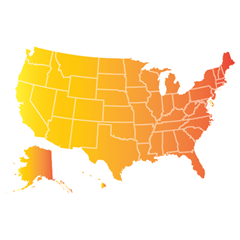Praseodymium
Rare Earths: Critical Minerals for The Energy Transition
Navigating the Praseodymium Market
Praseodymium is a rare earth element employed in speciality alloy and glass applications due to its metallurgical properties. It is commonly used as an alloying addition to magnesium to improve strength and corrosion resistance. Praseodymium is also employed in lithium niobate crystals for piezoelectric devices and as a colourant in glasses and ceramics, providing a yellowish-green hue. Its unique spectroscopic characteristics make praseodymium a candidate dopant for lasers targeting emerging terahertz applications. The supply of praseodymium is currently concentrated in China, which accounts for the majority of global production sourced as a byproduct from other rare earth mining and processing. Ensuring a stable supply is essential, given praseodymium's critical enabling role in specialised technologies. Diversifying supply sources through new mining projects and refining capabilities would strengthen supply security. Through in-depth analysis of supply sources, end-use market dynamics, and the geopolitical risk environment, SFA (Oxford) aims to provide strategic insights into both the current state and future demand of praseodymium to support well-informed decision-making and optimise long-term supply availability.
An introduction to praseodymium
Praseodymium demand and end-uses
Praseodymium possesses crucial magnetic, chemical, electrical, and optical properties and is highly suitable in various high-tech and green technologies, where demand is closely tied to its end-users spanning multiple industries, including electronics, clean energy and advanced materials.
Key praseodymium demand includes magnets for electric vehicles (EVs), wind turbines, hard disk drives, as well as speakers, headphones and actuators in electronic devices due to its compact size and magnetic strength.
Praseodymium-iron-boron (PrFeB) magnets, more commonly known as NdFeB magnets, have the greatest magnetic energy among commercial magnets. In wind turbines, these magnets are in the generator, efficiently converting wind energy to electricity. Praseodymium magnets are also used in magnetic resonance imaging (MRI) machines to image detailed cross-sectional soft body tissues, as well as in various types of industrial equipment such as magnetic couplings, separators, high-precision sensors, robotic systems, pumps, and lifting and handling equipment.
In the aerospace industry, aircraft engines utilise praseodymium with magnesium to strengthen alloys to withstand high temperatures for robust performance in extreme conditions, and praseodymium is also in the manufacture of precision optical glass. Alternative substitutes are yttrium and neodymium.
Praseodymium oxides (and neodymium) are used to colour glasses and enamels. One of the most notable uses is in the production of didymium glass, which is used to make safety goggles for welders, blacksmithing and glass blowers, blocking infrared radiation (heat) and yellow light.
Praseodymium is used as a dopant in materials used for lasers and fibre optics. In fibre optic cables, if praseodymium is added to fluoride glass, it can act as a signal amplifier. In the military, enhancements in solid-state YLF lasers containing praseodymium, which operate in the blue-green spectrum at ambient temperatures, have been achieved. These lasers can emit short pulses that are particularly effective for underwater communication and detection systems.
Praseodymium-based sputtering targets are employed in the creation of thin films for a variety of applications, including decorative purposes, semiconductors, displays, LEDs, photovoltaic devices, and functional coatings. These targets are also crucial in industries focused on optical data storage, glass coatings for automotive and architectural applications, and optical communications. These high-quality durable coatings enhance the performance and efficiency of the final products.
In motion pictures, praseodymium is used in carbon arc lamps for studio lighting and projector lights.

Strategic applications of Praseodymium
Praseodymium supply
Praseodymium is hosted in various minerals such as monazite, bastnäsite, xenotime and loparite. To a much lesser extent, praseodymium is also discovered in apatite, eudialyte, fergusonite, samaraskite and allanite, which are far more complex minerals where praseodymium is less economically viable to extract.
China is the largest producer of praseodymium. Other nations that supply praseodymium include Australia, United States, Russia, India, Vietnam, Brazil.
Future rare earth oxide (REO) producers
Rare earth recyclers

The Rare Earth markets
SFA (Oxford) provides market intelligence on rare earth oxides (REOs) and their price drivers.


Meet the Critical Minerals team
Trusted advice from a dedicated team of experts.

Henk de Hoop
Chief Executive Officer

Beresford Clarke
Managing Director: Technical & Research

Jamie Underwood
Principal Consultant

Ismet Soyocak
ESG & Critical Minerals Lead

Rj Coetzee
Senior Market Analyst: Battery Materials and Technologies

How can we help you?
SFA (Oxford) provides bespoke, independent intelligence on the strategic metal markets, specifically tailored to your needs. To find out more about what we can offer you, please contact us.
























































